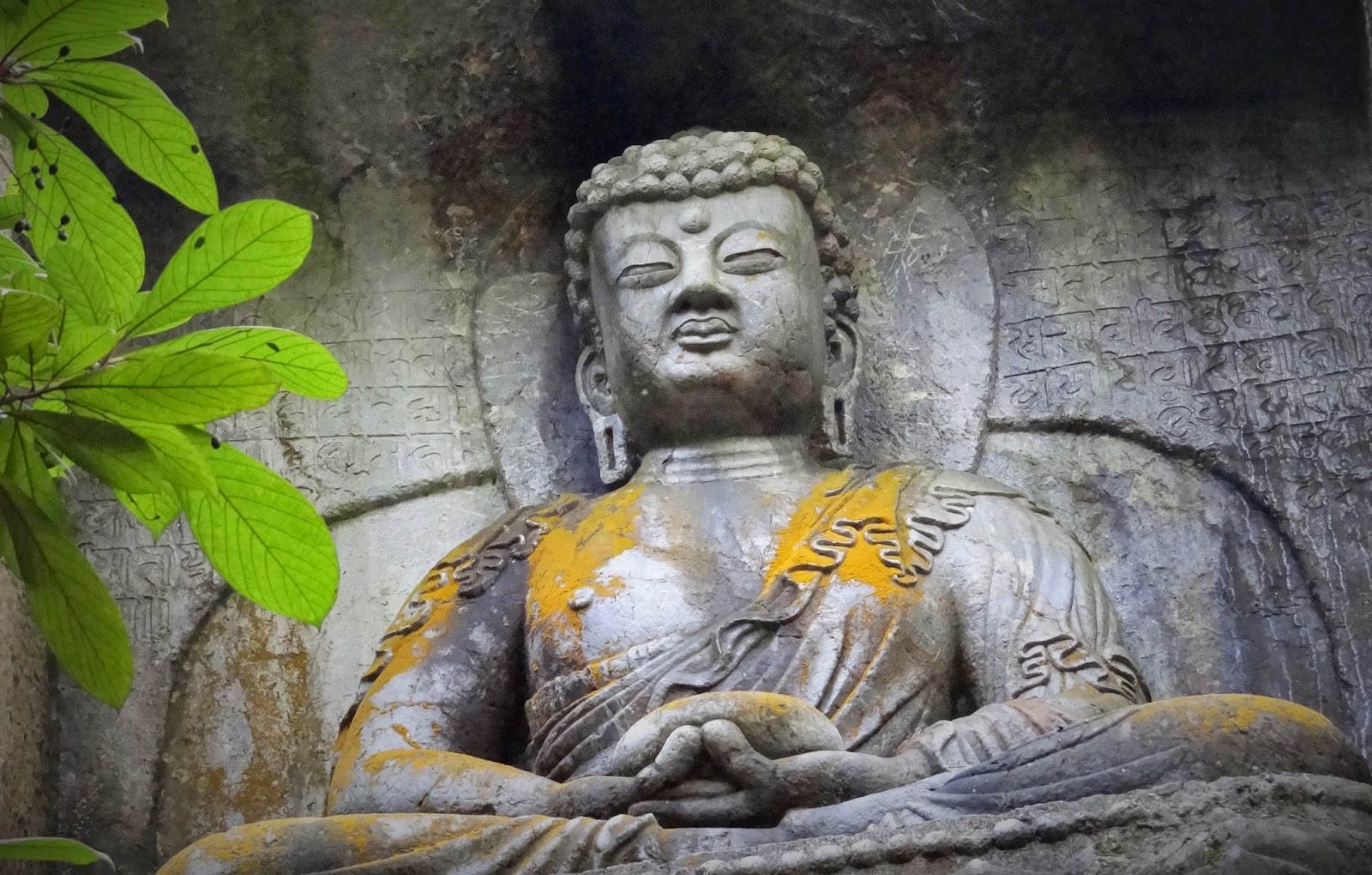23/11/14
When Buddhists are in front of a Buddha they have to pray,
my buddy informs me while apologizing as she leaves me to go kneel in front of
the statue. I tell her to take her time, but like everyone else, she runs
through the movements quickly then rejoins me. Is it because I am here and she
doesn’t want to appear as a bad host by leaving me on my own that she prays
quickly or would she have done the same even if I wasn’t there?
I view prayer and meditation as practices that require us to
slow down, take time and breathe. I view them as opportunities for reflection
in which we need to stop all the noise around us and focus on just being
present in that moment. My preconceived notions of how prayer and meditation
should be practiced conflict with what I am observing in the Temple. To me, it
appears that people are preoccupied and in a hurry as they pray. They appear to
be imitating the motions without any real conviction or faith. But maybe their devotion is there and I am
just unable to see it through the lens of my Western beliefs.
A friend told me that in Japan people would go to Temples to
give thanks by saying “what will be will be”. The process was fast because they
weren’t asking for anything, or confessing, but simply showing their gratitude.
At times I to feel the urge to give gratitude, to kneel down, to close my
eyes and just sit there, feeling the energy around me. I resist the urge
because I am not actually Buddhist and I would feel like an impostor or like I
was being disrespectful by taking up the space of devotees. But I am deeply
moved by the space, by the feeling of something bigger than myself in those
halls (and I don’t just mean the statue of Buddha which was enormous – the
second largest in China).
When we entered the main hall we could hear the eerie echo
of a devotee singing sutras. Behind the gigantic Buddha was a wall of carvings,
like an enormous fresco, of a Buddhist pilgrimage recounted in the Huayan
Sutras. The carving, which is made out of clay and over 20m high, is composed
of over 150 statues divided into three parts: heaven, earth and sea. I stood
craning my neck (despite my recent neck injury) for at least 20 minutes, trying
to capture all the details of the majestic work of art before me.
As we walked through the third hall, the Hall of Medicine
Buddha, the sun began to set and a the bell rang for prayer. I felt a bit
uncomfortable going to watch, I didn’t want to turn their prayer into a
spectacle but at the same time, it felt like a privilege to witness this moment
of sacredness. As we listened to the monks chanting, I observed the people all
around. Most of them had their eyes closed, bowed heads and hands clasped,
following the prayer of the monks; Although a few appeared to have been on a
shopping spree before coming to the temple and held designer handbags between
their joined hands. At one point, a
visiting monk wearing an expensive watch and sneakers with neon stripes on the
side, walked in front of my buddy and me, pulled out an iPhone and took a
selfie with the praying monks in the background. My buddy and I were shocked by
his behaviour. How does someone like
that become a monk? I’m not an expert, but I believe letting go of material
attachments is the first lesson in Buddhism 101. It is not my place to judge
the path his is on, but as I looked around me at all the excess, I can’t help
but feel a sense of disconnect between teachings and practice.
As we are leaving, my buddy comments on the
commercialization of temples and how tourism has impacted the meaning and
symbolism of sacred sites. In Asia, temples have for a long time been places of
commercial activity and it is not unusual for monks to sell flowers, prayer
beads, incense and other trinkets as offerings to Buddha. So while these
commercial activities might appear disruptive and out of place to someone like
me who is used to the separation of religion and commerce, it was probably not
shocking to other visitors there. Similarly, I find that large crowds can be
disruptive to the peacefulness of a temple, but to Chinese people, large crowds
are a part of everyday life. Perhaps they have more practice than me being able
to focus their mind and find quiet even amidst all the jostling and chaos of
visiting tourists.
Despite these differing cultural perspectives, I still was
awed by the temple and the rock carvings all around the hillside. The detail
and magnificence of the carvings and statues were mind blowing and well worth
the visit. I stayed until closing time and left reluctantly, wishing I had had
more time to explore. The visit was an interesting experience and a lesson in
intercultural approaches to sacred spaces. It also provided me with a research
question for one of my assignments: How has globalization influenced the
commercialization of temples and transformed the meaning of sacred spaces?
Pictures from Ling Yin Temple
There are no pictures of inside the temple because it is disrespectful.











No comments:
Post a Comment